Five and a half years ago I fell in love with the small mountainous country of Nepal. Nestled between the two giants of China and India, Nepal didn’t open its borders until 1950, shrouding the tiny nation in mystery and intrigue.
My first visit, I climbed to Annapurna Base Camp through my school, Neuchâtel Junior College in conjunction with the non-profit Light Up the World Foundation which enabled us to distribute LED lights to rural Nepalese families to replace the health hazardous kerosene. I instantly fell in love with the mountains, the calm of the villages mixed with the hurried chaos of Kathmandu and the relentless generosity of the people. When the opportunity arose to visit my favourite country again, I was ecstatic and ready to conquer a different trek with two of my friends, the Annapurna Circuit, a 230 kilometer journey within the Annapurna mountain region in central Nepal.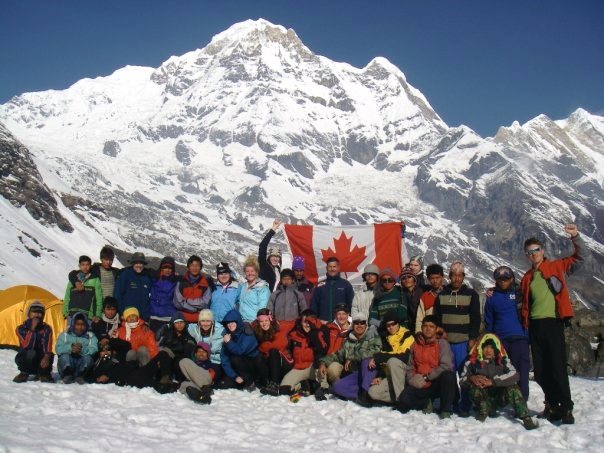
I typically agree with the famous phrase that “pictures are worth a thousand words,” but no pictures or words can compete with the up close and personal views of the majestic awe-inspiring beauty of the Himalayas. Nonetheless I have narrowed down my plethora of photos to my top ten to give a glimpse into the stunning landscape and our journey through the Annapurna region.
1. On our first day we were hit with a fierce rainstorm and therefore did not trek very far. But the rain allowed us to have this spectacular view of the lush jungle, on our second day from Bulebule (840 metres) to Ghermu (1130 metres).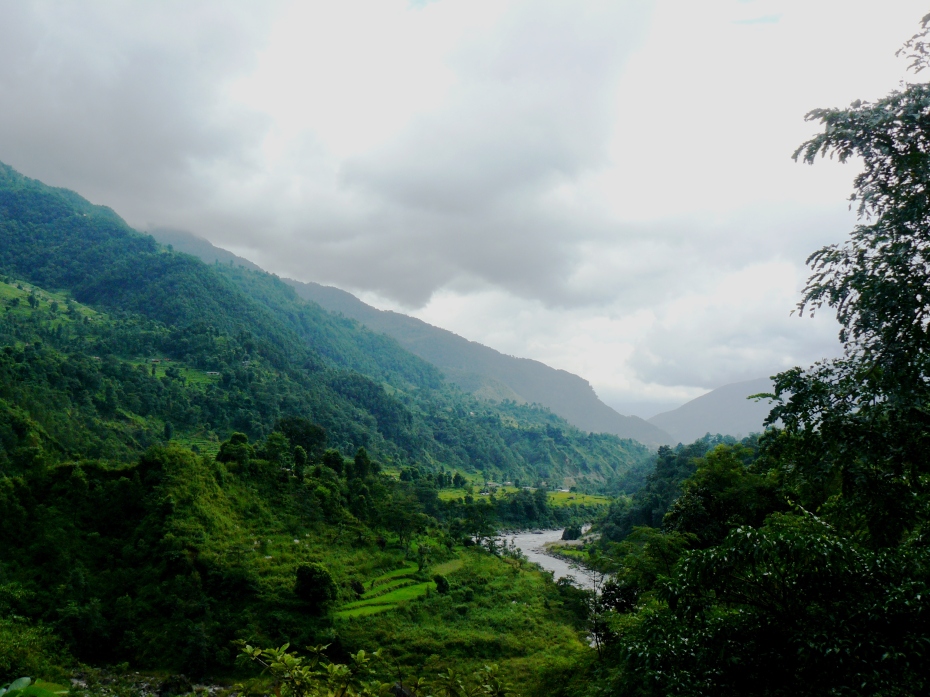
2. Our voyage from Ghermu to Tal was scenic, with a lunch stop at the appropriately named Super Rainbow. The last hour was a brutal uphill, as we gained 400 vertical metres to reach our destination of 1700 metres.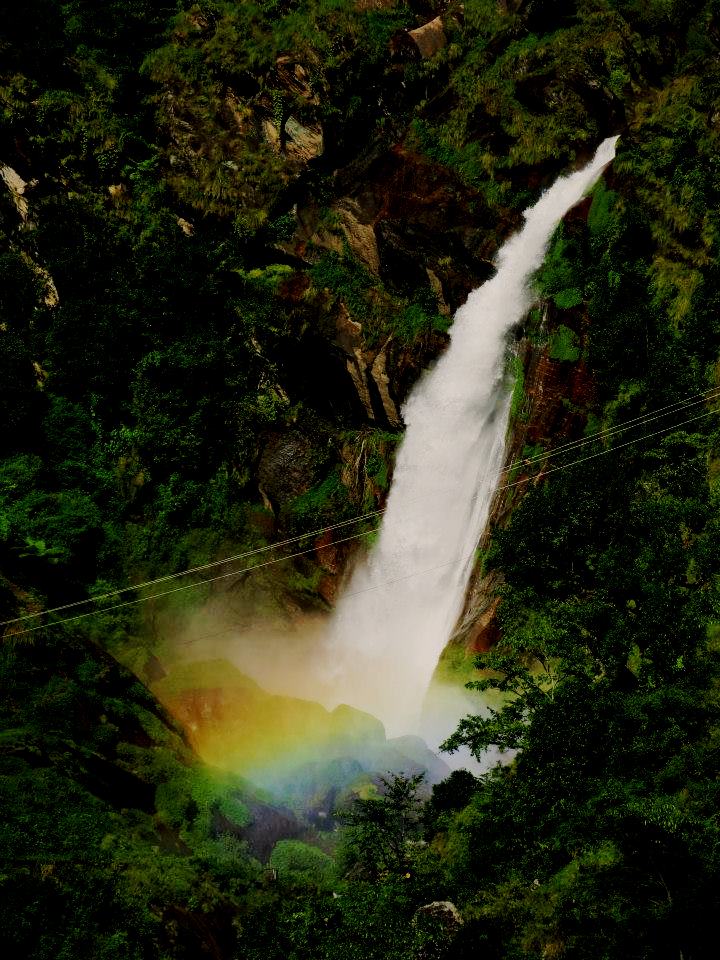
3. Synonymous with Nepal are prayer flags and wheels. Littered throughout the Annapurna Circuit, the prayer flags and wheels are inscribed with the Buddhist mantras. The prayer flags promote peace, wisdom and strength and are said to bring good fortune to the bearer. Prayer wheels are spun clockwise and are the equivalent of orally reciting the mantras.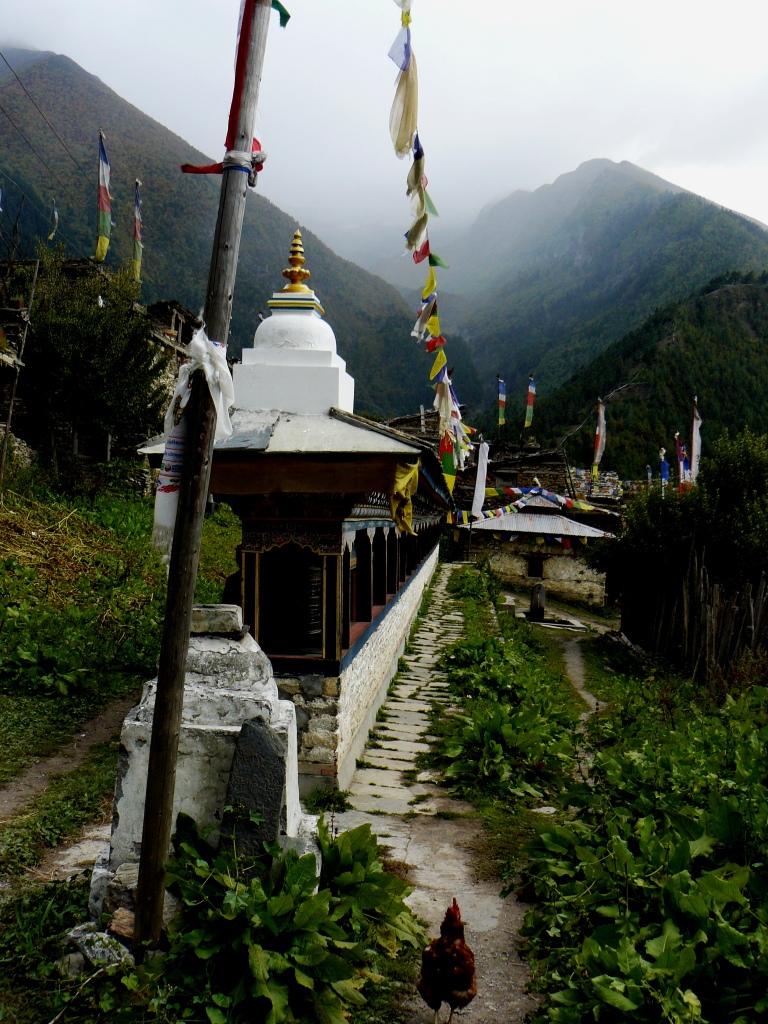
4. We decided to remain in Upper Pisang (3310 metres) for an extra day, so we could experience the extraordinary sunrise again. It was our first glimpse of the Annapurna peaks and snow-capped mountains.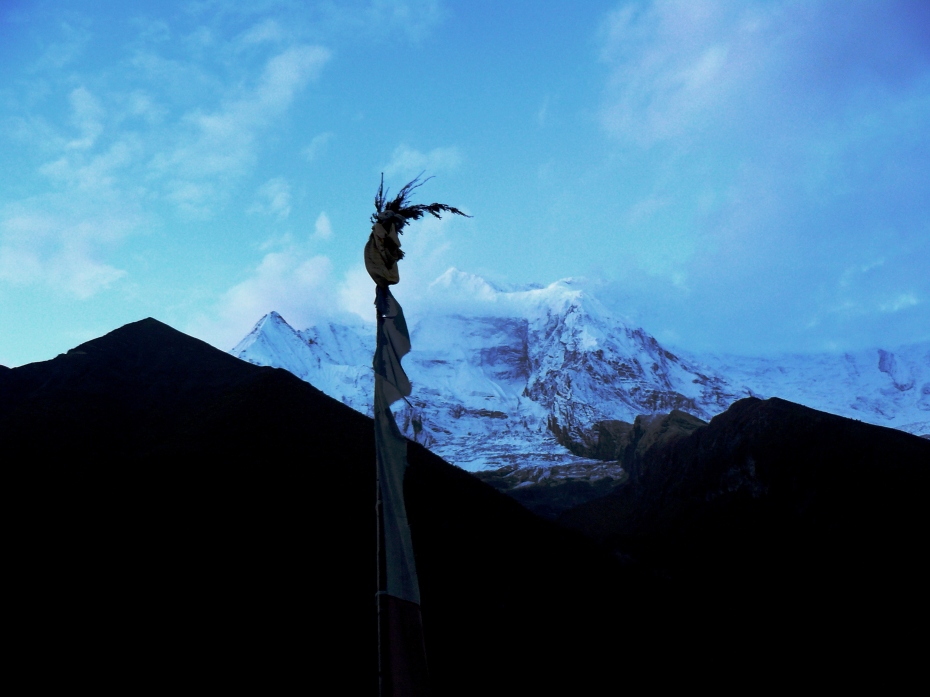
5. During our 20 days of trekking, we crossed dozens of bridges. The sturdiness of the bridges varied greatly and we went across as fast as possible for fear of it collapsing. The wooden ones were rickety and creaked in protest, in contrast to the metal ones that generally were more secure but at times were missing cables and bolts. Thankfully, we made it across each bridge safely, perhaps the flapping prayer flags attached to the bridges had something to do with that.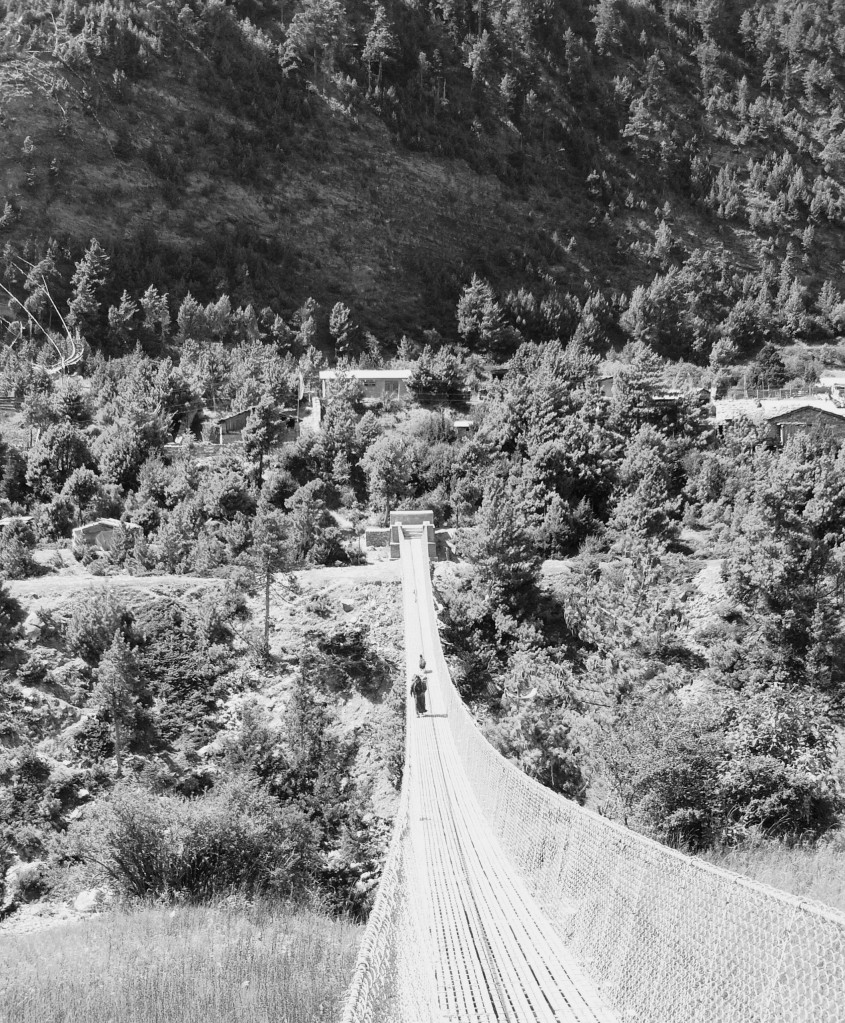
6. The ever-present yaks kept us supplied with delicious yak burgers, cheese and milk. The furry creatures roamed around the Annapurna region with large packs strapped to their sturdy backs.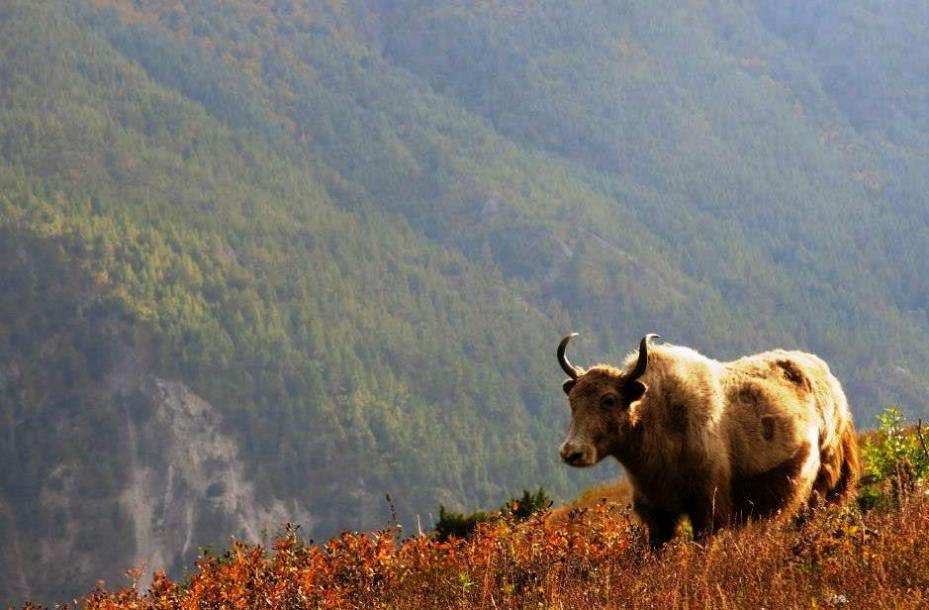
7. In order to help with our acclimatization, we did a side trip to Tilicho Lake and were not disappointed. The turquoise glacier lake was surrounded by snow-capped mountains with the distant rumble of avalanches in the background. Unfortunately at 4900 metres, I experienced a bout of mild altitude sickness that caused me to become dizzy and nausea. As a result, we headed down, with Jade and Oli helping me as I stumbled down the mountain like a drunken baby giraffe learning to walk.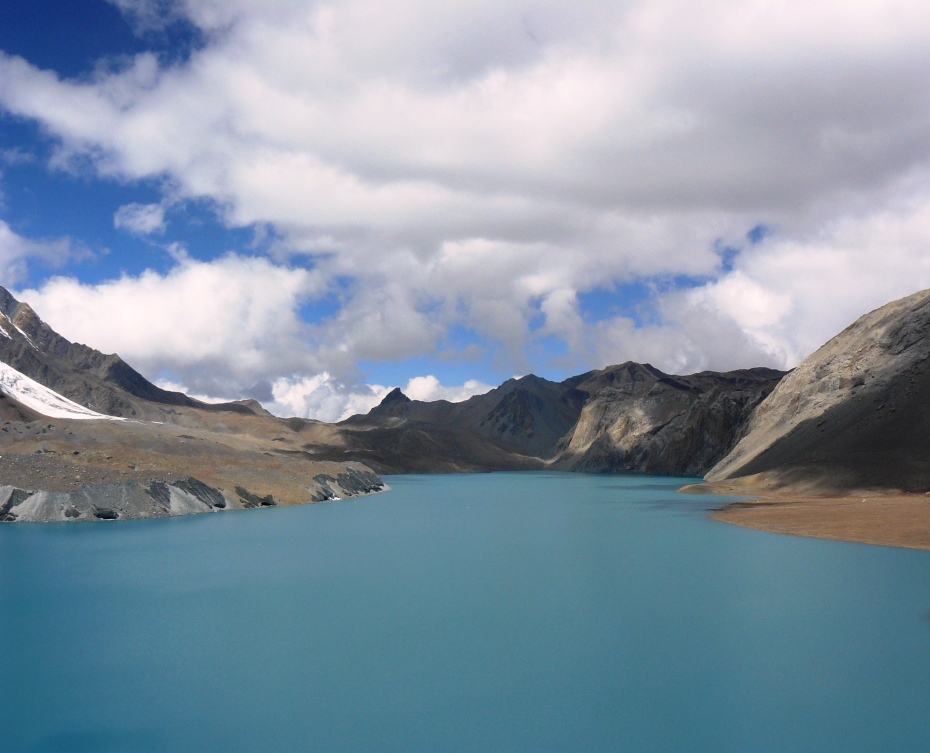
8. On October 10th, 2014, we began the ascent to the highest part of our trek, the Thorong La Pass. At 5416 metres, we were a bit light-headed but excited, exhilarated and a tad emotional about reaching the top. We enjoyed celebratory tea at the tiny tea shop before beginning our descent. Tragically, four days later a blizzard hit the pass and over fifty people lost their lives. I was astounded and saddened by the news and my heart and thoughts go out to the families of those whom perished.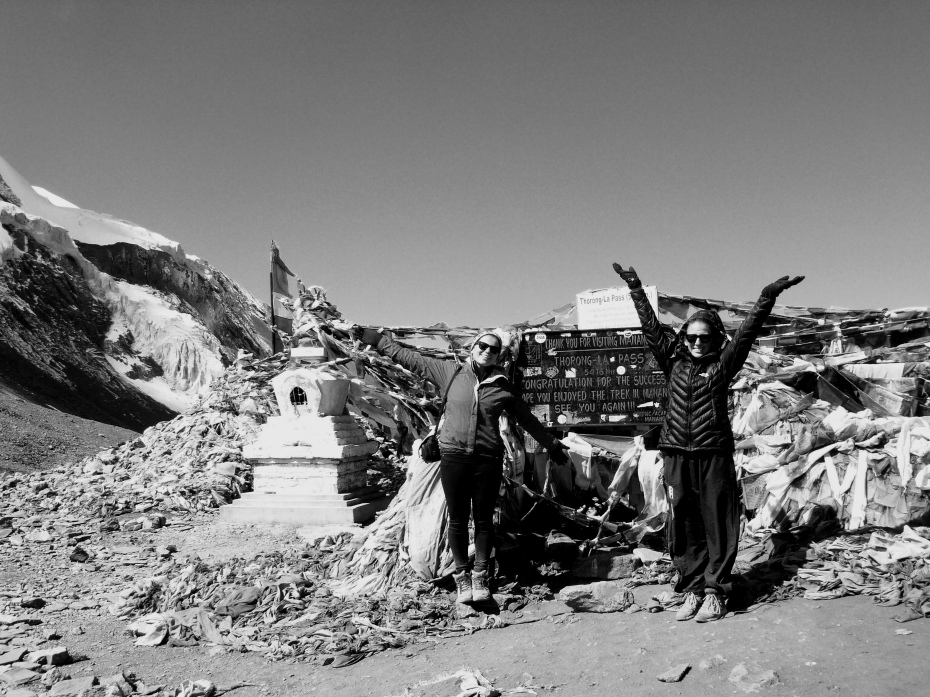
9. Our first stop in Kagbeni was the infamous Yak Donald’s, which was thankfully much better than McDonald’s and the yak burgers were to die for. We loved it so much we decided to spend the night, just so we could have more yak burgers. Kagbeni is also the starting point for the trek into the restricted, protected section of Upper Mustang, in which one must have a special permit and guide in order to limit the tourist impact on the locals and the environment.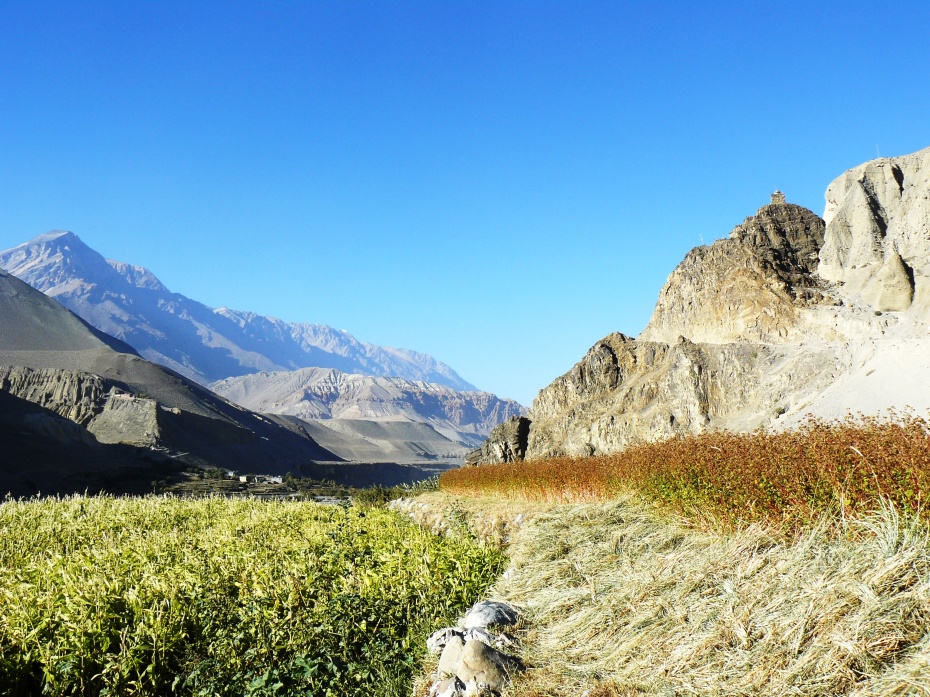
10. On our final day of the trek, we woke-up at the absurd hour of four am to catch the sunrise at Poon Hill (3200 metres). An hour and a half hike from Ghorepani (2800 metres) we made it in a staggering 45 minutes, I suppose after 20 days of non-stop hiking we were in quite good shape. We were the first ones to the top and claimed prime seats to wait for night to become day. As hordes of people arrived, an array of colours reached the night sky before the sun peaked over the mountain. It felt like ages before the sun fully hit us and warmed our frozen bodies. It was the perfect way to end the trek and to say farewell to the Himalayas.

Awesome achievement Alexis! Will be great to follow in your footsteps one day. And beautiful photos too. x
Thanks Melany! It was lots of fun! I highly recommend the trek!
Great writing as usual. What an experience!
Thanks! It was so much fun.
Pingback: Tour de (North) America | Wandering the World